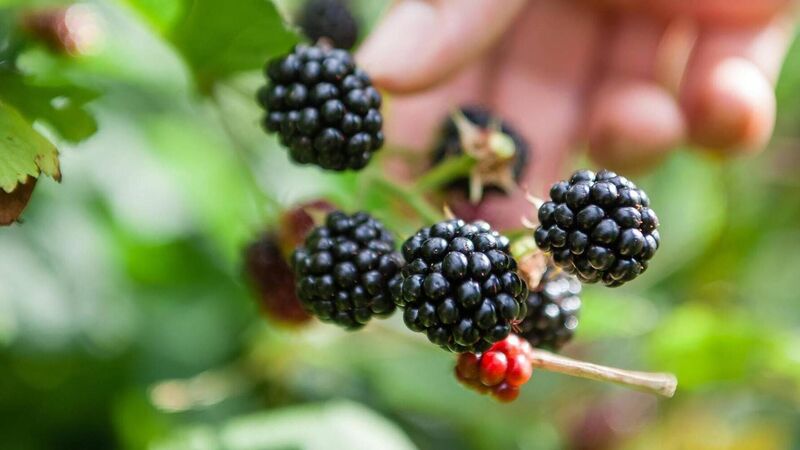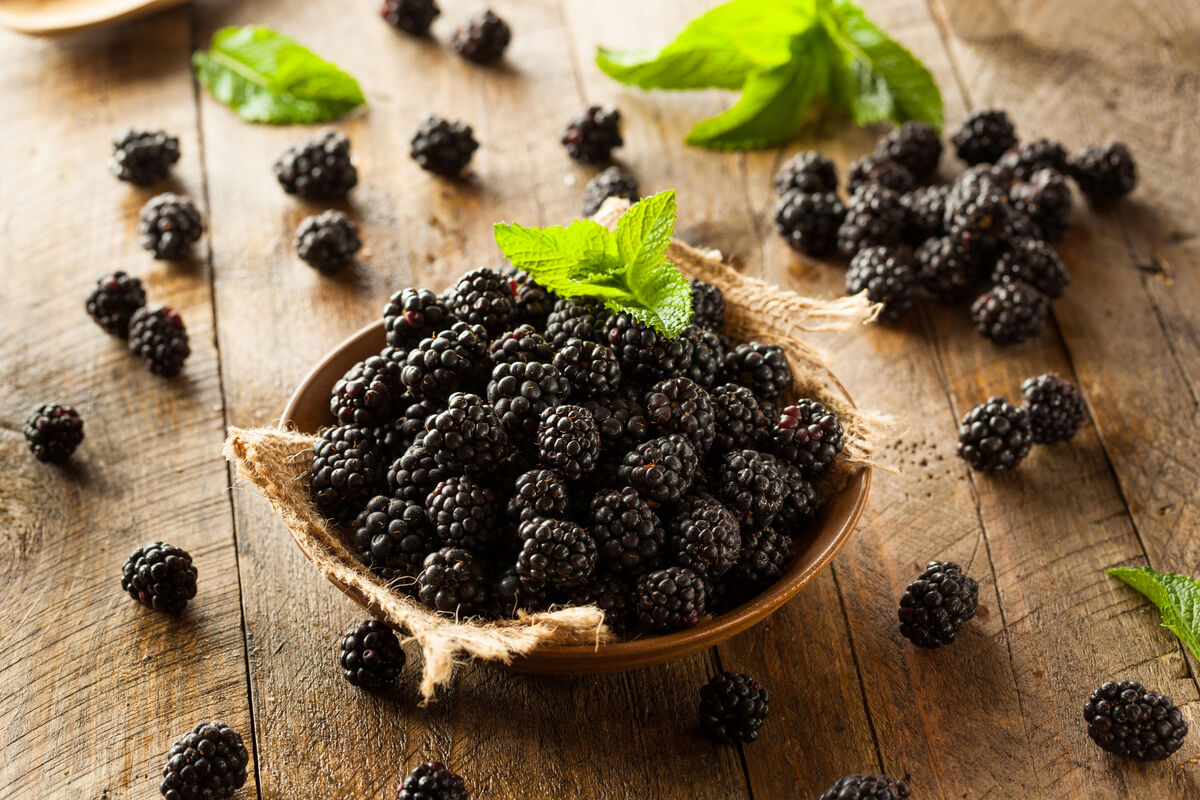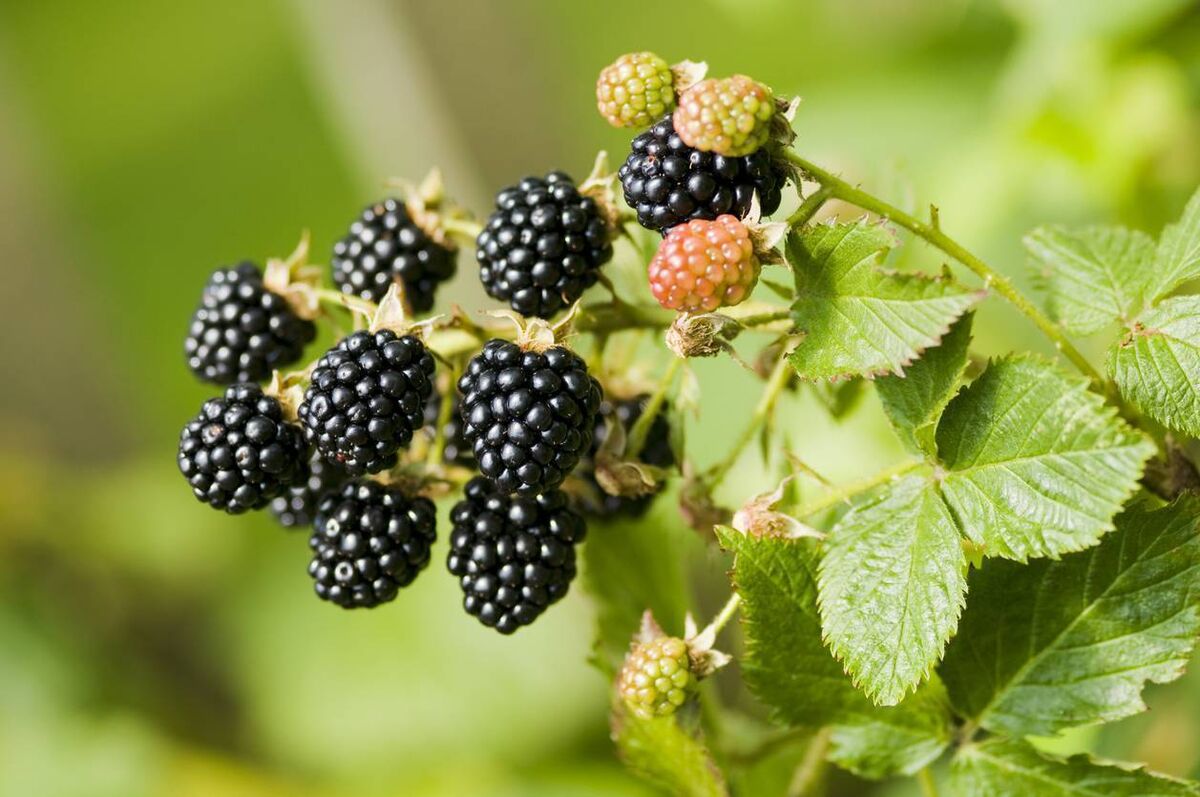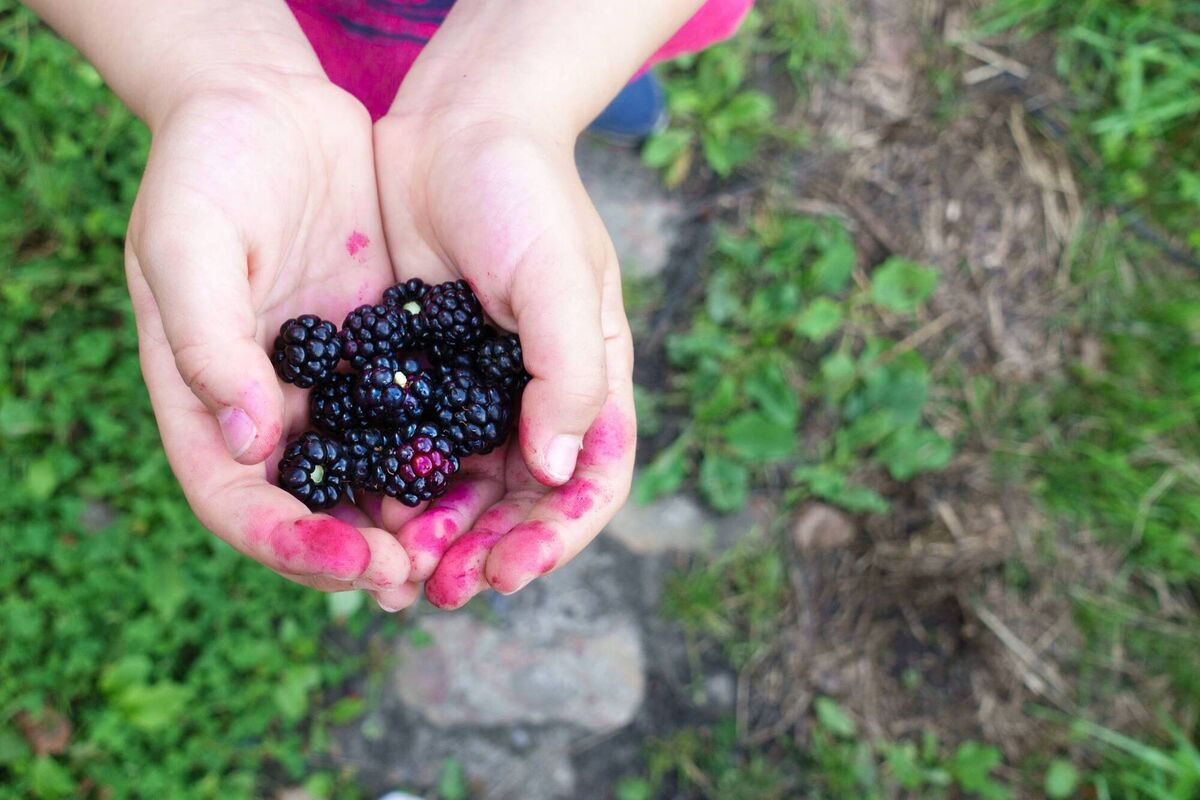Blackberries — the superfood coming to a bramble near you right about now

Blackberries are rich in antioxidant compounds, vitamins and minerals. They have an impressive quantity of Vitamin C, a powerful aid to our immune system — available just when we need it most. They are also a great source of other essential nutrients such as vitamin K and manganese
‘Superfoods’ often seem to come from faraway places, with exotic names and remarkable health benefits. Powdered or otherwise, we buy them in branded plastic packaging that lists the vitamins, minerals, and other nutritional information. Different superfoods come and go, as with fashion: popular now, then never to be heard of again in a few years’ time.
But there are other superfoods that have been on the menu for millennia. Blackberries are a favourite superfood that don’t have to come in plastic packets. Growing abundantly in the wild, these sweet and delicious berries are free, easy to find and always accessible. Rather than being a recent fad, humans here have been gathering and gobbling blackberries for thousands of years.

The Mesolithic hunter gatherers who inhabited this island 12,000 years ago would have been reliant on a wide variety of wild foods, including wild roots, shoots and seasonal fruits. The first farmers, in the Neolithic period, would have continued to be reliant on wild berries.
In the Bronze age, which began about four and a half thousand years ago, the landscape was becoming more agricultural and grains were increasingly becoming part of people’s diet, though still, wild gathered foods, including seasonal berries, would have still been a significant part of how people got their food. As woodlands were cleared for open areas to grow crops and manage farm animals, the edges of those woods provided perfect habitats for wild fruits, including elderberries, raspberries, blackberries, sloes, and rosehips. Their seeds show up consistently in archaeological digs from these times, so we know that people were gathering them, eating them, and preserving them to last through the winter months.
I imagine blackberries would have been especially celebrated as one of the few sources of sweetness in their diet. It’s also likely that those people had a good understanding of the nutritional benefits of blackberries and other wild fruits, packed as they are with vitamin C to help boost immunity as the autumn sets in. This knowledge, and the use of wild fruits, would have continued right through the medieval period and up to recent times.

With the advent of modern science, we know quantifiably that blackberries are rich in antioxidant compounds, vitamins and minerals. They have an impressive quantity of Vitamin C, a powerful aid to our immune system — available just when we need it most. They are also a great source of other essential nutrients such as vitamin K and manganese.
Blackberries are not the only good thing to come from bramble. Various parts of the plant have antiseptic and anti-fungal properties and are thus used in herbal medicine to treat all manner of ailments. A poultice made from bramble was traditionally used to reduce swelling. A tea can also be prepared from bramble leaves that can help treat colds, coughs and sore throats.
Now that blackberries are ripening in the hedges, I can’t ever walk too far in a hurry. I love picking and eating as I go along, and sometimes manage to gather enough to bring home for making ice cream, crumble, jam or simply adding to morning smoothies. Last year we made a blackberry infusion that will definitely have to be made again.
But I find that the act of gathering is at least as satisfying as the joy of having these delicious, fresh, free, wild berries to savour. Slowing down to peek closely into the hedge, colourful caterpillars on a leaf become apparent. In stillness, the grasshoppers ‘singing’ resume loudly from the tall, grassy verge or the field behind. These are details that get overlooked when walking along with more momentum, but not when blackberry picking is inadvertently making us more mindful.

Silver-washed fritillary butterflies are no stranger to bramble bushes, as this species’ preferred habitat is in woodland clearings and edges, exactly where brambles are. They often hover to soak up the sun’s rays, giving the forager a chance to observe their big, stunningly patterned, rust-coloured wings open in the late summer sunshine.
Brimstones, meadow browns and lots of other butterfly’ species are also sustained through the summer by the nectar of bramble flowers, and when blackberries ripen, butterflies unfurl their long proboscis to suck the sugary berry juice directly from blackberries. In Britain, scientists have identified 150 invertebrate species feeding on bramble. Apart from its usefulness to other species, bramble is a wonder plant in its own right too. The long shoots grow at a phenomenal rate — more than 5 centimetres per day. Time lapse photography shows how the tips of each shoot wave about looking for things to climb upon, more mobile and exploratory than we imagine any plant to be.
The combination of fast-growing shoots and backward pointing thorns gives bramble an impressive ability to colonise new territory, as the thorns help stems to grip on to the plants and stone walls that they’re clambering over. This is how bramble establishes itself so rapidly in gardens, field corners, abandoned buildings, and anywhere it can get a foothold.
Wherever the stems touch the ground, they put down little rootlets, aiding their onward advancement. For most, these traits are not perceived as being positive, especially considering our mindset of wishing always to have control over natural processes and our reluctance to ‘let things get ‘out of hand’. But for nature, brambles’ determined, pioneering character is a definite advantage.
Because bramble creates thorny, impenetrable thickets, grazers such as sheep and deer are deterred from trampling through it, and this in turn can create the conditions for tree saplings to take hold. As a ‘nursery’, bramble is often the first stage in the natural succession of natural woodland establishment, a crucial part of rewilding. In time, this facilitates truly wild, self-seeded and naturally nurtured native trees to emerge from the protection of the thorny scrub.
Life cycle of the blackberry... pic.twitter.com/GePemAhurB
— Mark Stephens (@MarksLarks) July 6, 2022
In the meantime, thickets of bramble provide shelter and sustenance for wild creatures. The blossom in early summer is rich in pollen and nectar for honey bees, wild bumblebees and solitary bees too. Nesting birds find shelter in the thicket and protein rich insect food among the leaves. The fruits are eaten by many wild birds, wood mice, pygmy shrews, foxes, badgers, hedgehogs, stoats, and pine martens.
The benefits of blackberries extend far beyond our own human health, sustaining all manner of wildlife and even helping the restoration of native woodlands, all without any effort or guidance from our human hands.








